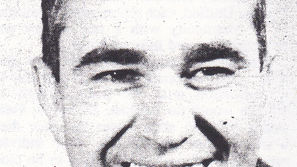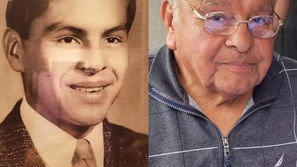Ed Gwartney remembered
- Bill Coate
- Sep 25, 2019
- 4 min read

For The Madera Tribune
Ed Gwartney, 1941-2018.
Eventually he will belong to the ages; he has already found his place in the history of Madera Unified School District. Today, however, he belongs to us — his family and friends.
Ed Gwartney died one year ago today and left a void in our lives that just can’t be filled right now.
Yesterday I drove out to James Monroe School to pay my respects to my friend. As I sat there and looked at the “Ed Gwartney California History Center,” my mind went back to the last time I saw his creation in action.
The date was Oct. 21, 2015, and at 9:45 in the morning, two buses brought 75 visiting 4th graders from Cesar Chavez School to the pioneer museum town.
As always, the excitement was contagious as the youngsters packed into the general store to hear Gwartney tell what it was really like to travel the Oregon/California Trail.
He told how mothers gave birth to children; fathers buried them, and marauders dug them up. He said dysentery swept through the wagon trains, and loads of precious provisions were dumped to keep the jaded mules and oxen alive.
With visions of the “Real West” firmly implanted in their minds, the visitors then followed Gwartney outside to meet Monroe’s sixth grade docents.
First, Folklorico dancers entertained the Chavez students in the old mission. Then a group of students in costume regaled their guests with their famous rendition of “The History of California in Five Minutes.”
Before leaving the mission, a docent shared some of the highlights of a neophyte life under the Jesuit missionaries.
The student visitors then followed Gwartney to meet Mrs. Jackson and Mrs. Johnson, two women who traveled the trail together in 1846. The kids learned a great deal about the trials of this wagon train as the women told stories on each other while standing beside the wagon that had carried them to California.
Next came “Big Tooth Gordon,” who was locked up in the James Monroe hoosegow. A miner’s court had convicted him of some egregious violation of gold rush law and condemned him to hang. Gordon could be heard protesting his innocence as the visitors moved on to the cemetery where bodies of the recently departed stepped away from their tombstones to tell their sad tales of woe.
Cholera had ended the life of one while a swift kick from a mule had dispatched another.
Much to the surprise of everyone, William Thurman, Madera County’s first sheriff came back to life, as did the notorious stage driver, “One-eyed Charlie Parkhurst.”
As the children turned from the cemetery, they were startled by the person of Joaquin Murrieta standing by his tombstone, which had been placed outside the graveyard fence.
At that point, the boom-boom of a bass drum filled the air. A funeral procession was taking place right there in front of everyone. Three female mourners walked in front of the casket, and the undertaker, followed.
When the remains had been appropriately placed at the cemetery, the atmosphere lightened a bit as the Monroe kids performed an old-time melodrama entitled “Holdup at Dead Man’s Gulch.”
At the conclusion of that performance the students from Chavez School were divided into groups of six to eight each.
The remainder of their visit to the Children’s Museum brought the visitors face to face with the Monroe docents in several different stations. Everyone made cornhusk dolls and action figures. They were taught to work with leather and made name tags for themselves.
All of the students took turns at the rope-making station and spent some time panning for gold. There was also the bucket brigade and a trip into the gold mine. Everyone had to send a telegraph message and experience the tribulations of loading a wagon.
At another station, the kids got to play with the same kinds of toys children played with a century ago. They also churned butter and enjoyed the fruits of their labor, which was abundantly spread over crackers.
All told, that event four years ago was a magnificent experience. It was 2 ½ hours of pure elixir. It is beyond me how Gwartney could envision such a complex tapestry of history which allowed kids to teach kids.
Ed Gwartney and his James Monroe Children’s Museum had a lot of support in the community and in the school district, So much so that the school board decided to honor Gwartney by naming the museum the Ed Gwartney California History Center.
I went with Superintendent Todd Lile to visit an ailing Gwartney and to share with him the board’s intent. He was humbled and pleased.
The plan was to announce the name change at the school board meeting on the evening of Sept. 25 and invite Gwartney to be the guest of honor.
Unfortunately, he wasn’t able to make it. At approximately nine o’clock that morning he passed away after a long fight with cancer.
So, a whole year has passed since Ed died. Soon it will be two and then three, and then ...
As I was writing this, something that Gwartney once told me slipped out from the folds of my memory. As we were driving slowly along one day, he looked out across a field of pasture land and said, “Bill, some day we will all be fodder just like that stubble out there.”
That may be true, but it isn’t the whole story. We all have lives, and we all will be remembered for something by somebody. In Ed Gwartney’s case, the History Center on Lake Street will keep his memory alive in this community for years to come.


























Comments